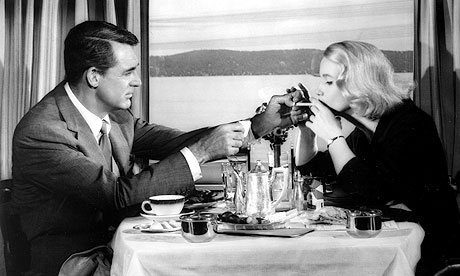
by Jamie Freveletti
I'm a huge fan of classic movies (and songs). If you're a writer you need to watch the old ones to see just how conflict between women and men or evil and good should be done. I've been fairly outspoken about my dislike of the current "torture porn" movies and books. I'm not really blaming the writers, we all realize that the world we live in is getting more vicious by the year--one only has to watch the political attack ads to see that civility is long gone, but I do think that there is still a lot of room for finesse.
There's no putting the graphic scene back in the corner. We're seeing way too much violence in our world and media now to act as though it's not happening.
Do these books work? Yes. Are they going to last? Maybe. Should you write one? If you want, but before you go straight to the scene where the woman is strapped to the bed and being attacked you should probably watch some classic movies. These writers had to produce the same thrill and do it by igniting the imagination, not by writing an overt scene.
Case in point: What are these two going to be doing next? (Spoiler alert)

If you said making love, you would be right. This scene oozes sex, and just about everyone over a certain age can see it. They're at the end of their dinner (the coffee's on the table), he's doing something for her -an act of deference and a courtly gesture--and she's holding his hand lightly as she responds. Now, if you wrote this scene, but changed his behavior just slightly, everything changes:
What if she had asked for a light and he simply handed her the lighter? Would those two be racing to her room? I think not. And if you wanted to show that he is even more uninterested, or perhaps even a boor, you would have him toss the lighter on the table.
Second shot-- Look at the photo of Audrey Hepburn and Cary Grant above. Who flirting here?
Clearly the woman. Audrey Hepburn's next line, "How do you shave in there?" Great bit of dialogue that points out his cleft chin. If this scene was in a novel the fact that he had a cleft chin and she points at it and you added that line it would speak volumes about his looks without using the word "handsome" anywhere. These two also end up in bed, but only after he insists on marriage. Nice twist, and Cary Grant is the one who wanted to have the woman chase and the man hold out.
Contrast that with this scene:

He's definitely on the move and Doris Day is considering her next one--should she say yes or no? Since it's a Doris Day movie she says yes only after safely married. But if you write a scene that describes a man stepping up behind a woman, gently placing his hands on her bare shoulders, and whispering in her ear, that paragraph screams intimacy and approach, and you never once have to clarify his intentions.
But conflict is always best when writing mysteries and thrillers, and this photo says it all:
What I like about this scene is he's angry--his face shows it and he's got her by the wrist--but look at her, she's not intimidated at all. Her chin is up and she remains relaxed and doesn't try to pull her arm away--all moves that a writer would describe if she wanted to send the message that the woman is not worried. Here Grace Kelly's character looks like she's still got the upper hand: and she does, because he doesn't leave--they end up...
Having sex-okay some behavior is universal and I guess when you're Cary Grant you end up having a lot of sex in your movies, but in this case it was unclear whether he was going to go for it. For most of this movie Grace Kelly's character spends her time chasing him in order to unmask him as the famous cat burglar and he was fascinated by her but more often than not angry, too. In the actual movie the ending was changed. Initially Hitchcock had them going their separate ways, but he was pressured to change the end to a more "hollywood" happy one. He does it with a funny little twist.
I like the subtlety of the classics. I like the challenge of making a statement without overtly saying it, and I don't always get it right, but I hope to keep working at it. Thrillers generally require broader images, but readers notice the small ones too. Here's to adding more of those!



5 comments:
Great post--some insightful ways to create stronger scenes.
Well, done. This is somehting I have thought about often, but not to the level of detail you've shown here. Thanks for showing me a new plane to work on.
(Word verification: ovexpity: What Washington hockey fans feel when Alexander Ovechkin fails to score in a game.)
Thanks Chris and Dana! I'm still working on this in my own writing, so glad it helped!
Brilliant post, Jamie.
Greek tragedies aren't staged often any more--maybe because the murder happens off stage and the horror is conveyed only by the reaction of the chorus. Occasionally you see this done in a modern drama (as when the camera cuts from a man threatening suicide, just before he pulls the trigger, to the face of the protagonist trying to stop him. Then you hear the shot and see the act reflected on the protagonist's face). It happens infrequently enough to be quite effective.
`
`
`
`
`
`
`
`
`
`
`
`
`
`
`
`
`
`
`
`
`
`
`
`
`
`
`
`
`
`
`
`
`
`
`
`
`
`
`
`
`
`
`
Post a Comment